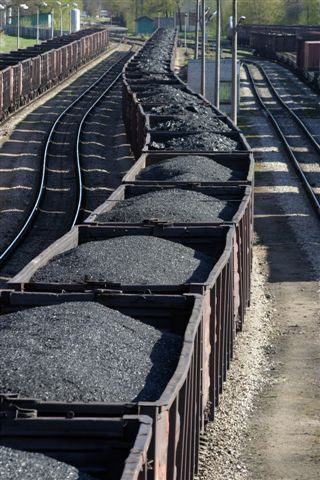As the Arctic sea ice declines to record lows, Greenpeace has released a report exposing plans by the Queensland coal industry to increase exports to record highs. The report summarises the coal export expansion planned for Queensland’s Galilee Basin, and the greenhouse gas emissions that would be created if the nine mega-mines proposed for that region went ahead in the time frame and at the capacity that the companies themselves have nominated. The report relies on figures provided by the proponents themselves.
Altogether, if the mines currently being proposed in the Galilee go ahead, up to 330 million tonnes of coal will be produced every year. When burnt in Asian power stations, that will produce 705 million tonnes of carbon dioxide pollution– a quantity that eclipses our own domestic emissions of approximately 560 million tonnes.
The public is right to react with incredulity to such figures: given the ever decreasing timeframe to avoid dangerous climate change, surely coal mining on such a scale is not going to go ahead…. is it?
The Queensland Resources Council responded to Greenpeace by claiming the scale of coal mining and port expansion we outlined was “fanciful.” No, they are based on the coal industry’s own documents – EIS’s, prospectuses for shareholders, etc. If the figures in these documents are indeed fanciful, we look forward to the QRC outlining exactly which ones are dodgy, and we are sure potential investors would be interested also.
But we can’t sit back and just hope that the scale of coal export expansion in Queensland is being overstated. The Australian government has committed to joining the rest of the world in limiting global warming to less than two degrees above pre-industrial temperatures. The International Energy Agency (IEA) has modelled coal energy demand that would ensure that we meet climate change commitments, and shown that global demand for coal needs to sharply and quickly decline if we are to meet the two degree goal. If the expansion of the Galilee outlined in the coal industry’s own documents happen, it make it extremely difficult to stay under 2 degrees.
In the scenario developed by the IEA for their World Energy Outlook 2011 estimating world energy consumption to 2035 that is compatible with meeting the two degree limit, global demand for coal peaks around 2016 and then declines by 2.7 per cent per year on average. In 2035, it would be 30 per cent lower than 2009.
As the world’s second largest exporter of thermal coal, the volume of Australia’s supply of coal into the world market will play a an absolutely crucial role in determining whether we breach the commitment to keep warming to below two degrees above pre-industrial temperatures.
The current scale of coal export expansion proposed in Queensland and NSW is utterly incompatible with a commitment to tackle climate change. Does the federal government intend to act on this knowledge, and constrain the coal export industry in line with our international climate commitment, or does it intend to allow the industry to propose and decide where, when and how much coal Australia exports? If the latter, they will abandon their commitment to helping avoid dangerous climate change.
The melting of the Arctic sea ice to unprecedented lows this northern summer is the sobering backdrop to Australia’s somewhat immature national conversation about our coal export industry. Greenpeace’s ship the Artic Sunrise is bearing witness to that melting. Here in Australia, we’re lifting the lid on this country’s biggest single contribution to that unfolding environmental crisis.
Georgina Woods is senior climate and energy campaigner for Greenpeace Australia Pacific










